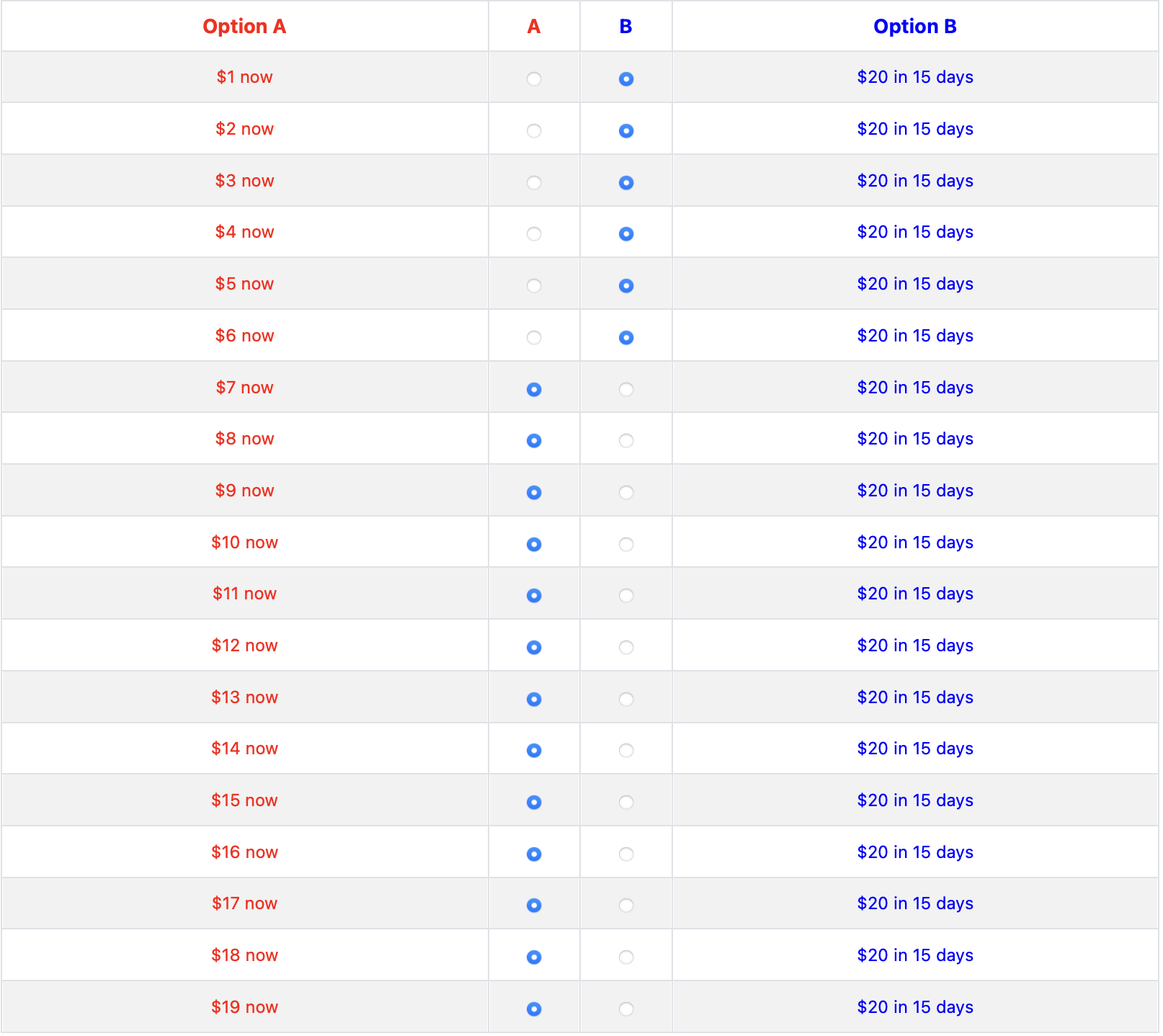Please read these instructions carefully. There will be comprehension checks. If you fail these checks, you will be excluded from the study and you will not receive the completion payment.
Throughout this experiment, you will need to assume that you are making decisions on specific dates that may be different from today's actual date. "Assume" means to imagine or pretend that something is true for the purpose of making your decision.
Example: If you are told to assume today is March 15th, 2025, then "3 days from now" would be March 18th, 2025. Please keep track of these assumed dates when making your choices.
On the first decision screen, you will be asked to choose which of two payment options you prefer. You will see choice lists such as the one below, where each row is a separate choice.

In every list, the left-hand side option (Option A) represents a payment available on an earlier date, while the right-hand side option (Option B) represents a payment available on a later date. To make a choice just click on the option you prefer for each choice (i.e. for each row). An effective way to complete these choice lists is to determine in which row you like to switch from preferring Option B to preferring Option A.
Based on where you switch from Option B to Option A in this list, we assess the amount 'today' that you consider to be of equal value to the amount on the later date. For example, in the choice list above, the switch from Option B to Option A occurs between $19.0 and $19.5. This indicates that you value receiving $25.0 on 01-24-2026 as being worth an amount between $19.0 and $19.5 today (12-05-2025).
Note: While you may choose as shown in the image below, it is illogical. You wouldn't prefer receiving $19.0 today (12-05-2025) over receiving $25.0 on 01-24-2026, and at the same time prefer receiving $25.0 on 01-24-2026 over receiving $19.5 today (12-05-2025) (in other words, you wouldn't prefer receiving $19.0 today (12-05-2025) over receiving $19.5 today (12-05-2025)).
Auto-completion: The table auto-completes your choices so you don't have to click through all of the rows. You do not have to start at the top of the table. If you select Option A in any one row, we assume you will also prefer Option A in all rows above that row. If you select Option B in any one row, we assume that you will also prefer Option B in all rows below that row.
Important Payment Notice: Please make thoughtful decisions throughout the experiment. If you select the same option too frequently across multiple choice lists, or consistently choose extreme values without variation, this may indicate that you are not engaging seriously with the task. In such cases, you may not receive payment for your participation.
However, don't worry - occasional patterns or similar choices are completely normal and reasonable when they reflect your genuine preferences.